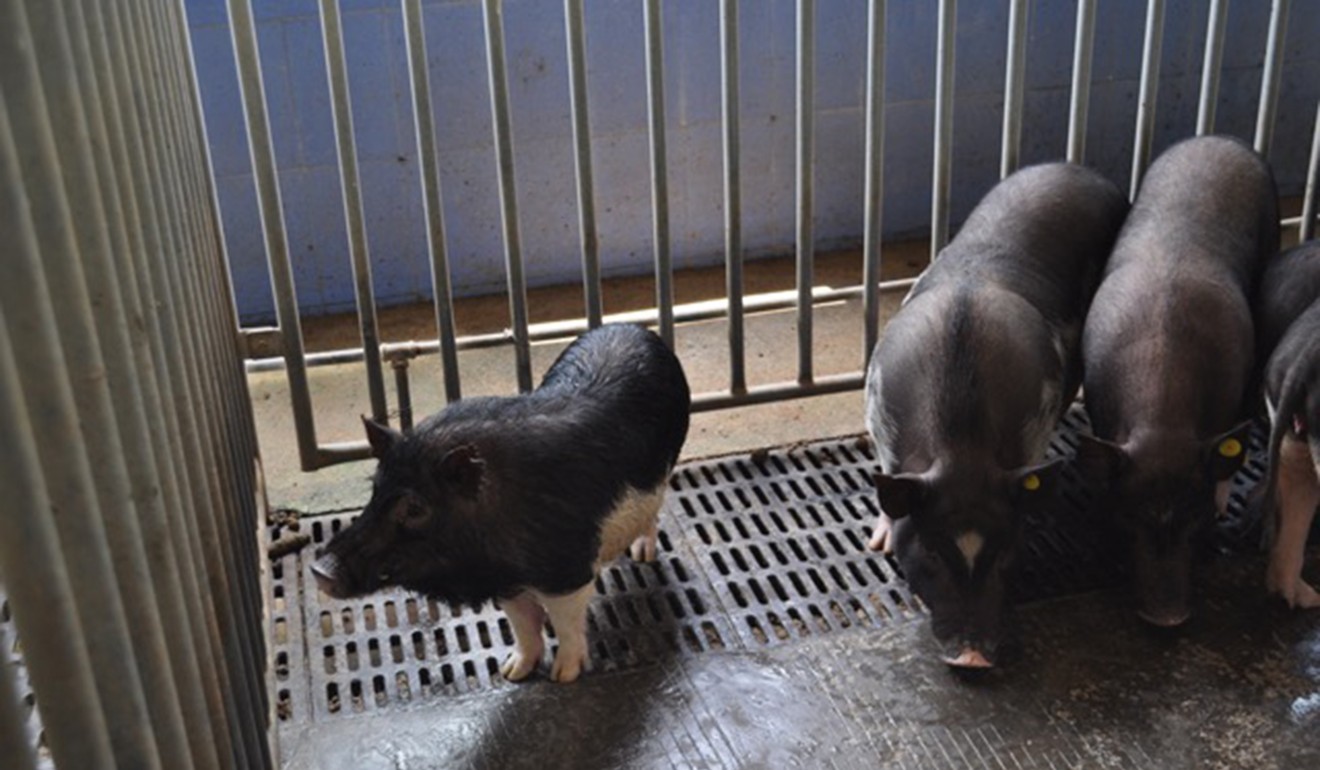
Before gene-edited babies, how Chinese scientists created super-strong dogs … and autistic monkeys
- Some researchers tinkered with the genes of animals so they would have conditions seen in humans they wished to study or find cures for
- Others gave animals potentially useful attributes, such as dogs with bigger muscles that could run faster
Following Chinese scientist He Jiankui’s claim this week to have created the world’s first genetically edited babies – twin girls Nana and Lulu – the use of the technology that made this possible has come under international scrutiny.
Here are some of the other ways Chinese scientists have used CRISPR-Cas9 (CRISPR being short for clustered regularly interspaced short palindromic repeats) to edit genomes:
What is gene editing? Who’s doing it? And is it right?
1. World’s first cloned dog
Last year, Chinese scientists claimed to be the first in the world to clone a dog using CRISPR-Cas9.
The dog in question is a beagle named Longlong, cloned from another dog, Apple. Since Apple’s genes were modified to develop a blood-clotting disorder, Longlong also inherited the disease.

Scientists at Beijing-based Sinogene were seeking to study the condition known as atherosclerosis, which develops in people under unknown conditions.
The Chinese Academy of Sciences says that dogs are an ideal target for genetic modification and clinical models to study human diseases, because “dogs exhibit close similarities to humans in terms of metabolic, physiological, and anatomical characteristics, suffering from approximately 200 genetic diseases as that in human beings”.
At the time of the report, Longlong was one of three clones claimed to have been produced from Apple; the others were named Xixi and Nuonuo.
2. Monkeys with autism
Scientists have tinkered with mice in their attempt to understand diseases and potential treatments for decades. However, there are significant differences between mice and humans, particularly their brain structure.
Using the CRISPR gene-editing technology, in 2016 scientists edited the embryos of monkeys to insert genes associated with autism spectrum disorder in humans.
The monkeys subsequently born exhibit behaviour such as circling around their cages repetitively, and don’t interact as they normally would.
One of the study’s authors, Sun Qiang, said in an interview with Nature: “If another monkey is in its way, it will either jump over the monkey, or go around it, but then it would return to its original circular path.”
Now the scientists are trying to cure them.
Autism is a mental condition characterised by repetitive behaviour in humans, along with other symptoms – scientists say at least 100 genes are involved.

3. Micropigs
One way CRISPR-Cas9 could be commercialised would be to genetically modify animals to be pets. Such activity has already been occurring for thousands of years through selective breeding that domesticated wild animals. However, the new technology could make such modifications occur a lot faster, and offers the possibility of customisation.
In 2015, the Beijing Genomics Institute made headlines by claiming to have plans to sell bama pigs that were edited using the CRISPR technology to be tiny, and have customisable coat colours.
The animals were said to grow to the bulk of a medium-sized dog, weighing around 15 kilograms, and were priced at about US$1,400 apiece.
However, in 2017, the company told MIT Technology Review it now had “no plans to sell micropigs”.
4. Super-strong dogs
In another CRISPR-Cas9 experiment on beagles, the world’s first genetically engineered super-strength dog – aptly named Hercules – was born in 2015.
Scientists in China made Hercules and his sister Tiangou super buff by turning off a gene called myostatin, whose purpose is to moderate muscle fibres. Without it, muscles keep growing.
Liangxue Lai, one of the co-authors of the research, said in an interview with MIT Technology Review the dogs have “more muscles and are expected to have stronger running ability, which is good for hunting [and] police applications”.

